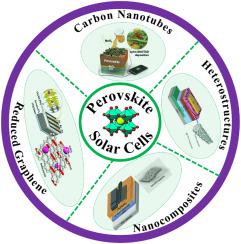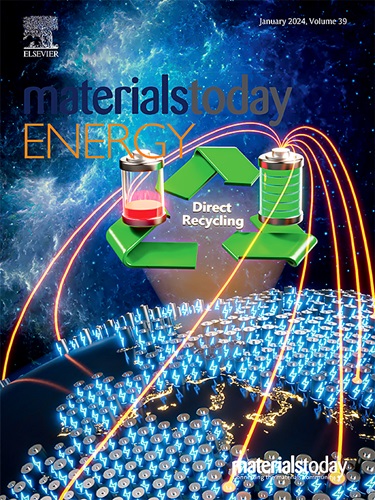Perovskite photovoltaics: exploring the role of 2D and 1D carbon-based interfacial layers for enhanced stability and efficiency
IF 8.6
2区 材料科学
Q1 CHEMISTRY, PHYSICAL
引用次数: 0
Abstract
In recent years, perovskite photovoltaics (PVs) have emerged as a highly promising technology for solar energy conversion. However, challenges such as instability, hysteresis, and limited device lifetimes have impeded their commercialization. In light of this, the proposed review addresses these critical issues by exploring the application of two-dimensional (2D) and one-dimensional (1D) carbon-based materials as interfacial layers in perovskite solar cells (PSCs). A potential remedy for these problems is the use of interfacial layers between the charge transport and perovskite absorber layers. In recent times, there has been a lot of interest in carbon-based materials in both two- and one-dimensional forms as interfacial materials because of their special qualities and suitability for PSCs. The application of 2D or 1D materials as interfacial layers in perovskite PVs is reviewed in this review, including electron (or hole) transport layers (ETLs or HTLs). We list the main issues with PSCs and show how these issues can be lessened by using interfacial layers. Furthermore, we synthesize existing understanding of the potential of 2D materials and their contribution in resolving important PSC problems. This thorough analysis advances the creation of dependable and effective perovskite PV systems for real-world solar energy harvesting uses.

过氧化物光伏:探索二维和一维碳基界面层在提高稳定性和效率方面的作用
近年来,过氧化物光伏(PV)已成为一种极具前景的太阳能转换技术。然而,不稳定性、滞后性和有限的器件寿命等挑战阻碍了它们的商业化。有鉴于此,本综述针对这些关键问题,探讨了二维(2D)和一维(1D)碳基材料作为界面层在过氧化物太阳能电池(PSCs)中的应用。解决这些问题的潜在方法是在电荷传输层和过氧化物吸收层之间使用界面层。近来,人们对二维和一维碳基材料作为界面材料产生了浓厚的兴趣,因为这些材料具有特殊的品质,适合用于 PSC。本综述回顾了二维或一维材料作为界面层在过氧化物光伏中的应用,包括电子(或空穴)传输层(ETL 或 HTL)。我们列举了 PSCs 的主要问题,并说明了如何通过使用界面层来减少这些问题。此外,我们还综合了对二维材料潜力的现有理解,以及它们在解决重要 PSC 问题方面的贡献。这一透彻的分析有助于为现实世界中的太阳能收集用途创建可靠、有效的过氧化物光伏系统。
本文章由计算机程序翻译,如有差异,请以英文原文为准。
求助全文
约1分钟内获得全文
求助全文
来源期刊

Materials Today Energy
Materials Science-Materials Science (miscellaneous)
CiteScore
15.10
自引率
7.50%
发文量
291
审稿时长
15 days
期刊介绍:
Materials Today Energy is a multi-disciplinary, rapid-publication journal focused on all aspects of materials for energy.
Materials Today Energy provides a forum for the discussion of high quality research that is helping define the inclusive, growing field of energy materials.
Part of the Materials Today family, Materials Today Energy offers authors rigorous peer review, rapid decisions, and high visibility. The editors welcome comprehensive articles, short communications and reviews on both theoretical and experimental work in relation to energy harvesting, conversion, storage and distribution, on topics including but not limited to:
-Solar energy conversion
-Hydrogen generation
-Photocatalysis
-Thermoelectric materials and devices
-Materials for nuclear energy applications
-Materials for Energy Storage
-Environment protection
-Sustainable and green materials
 求助内容:
求助内容: 应助结果提醒方式:
应助结果提醒方式:


